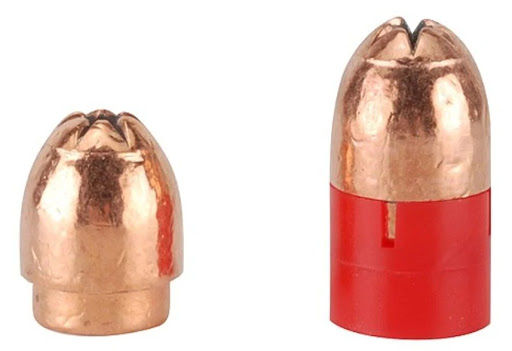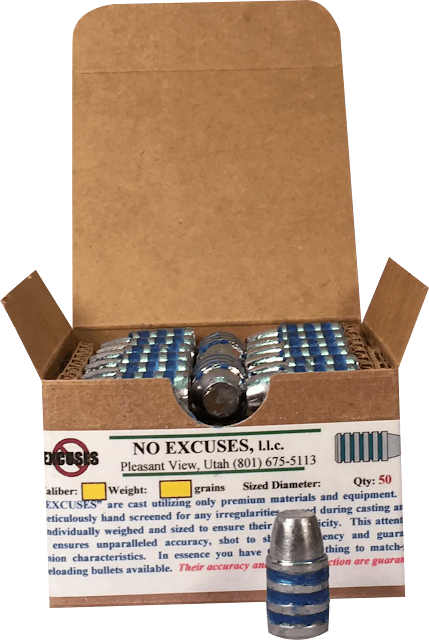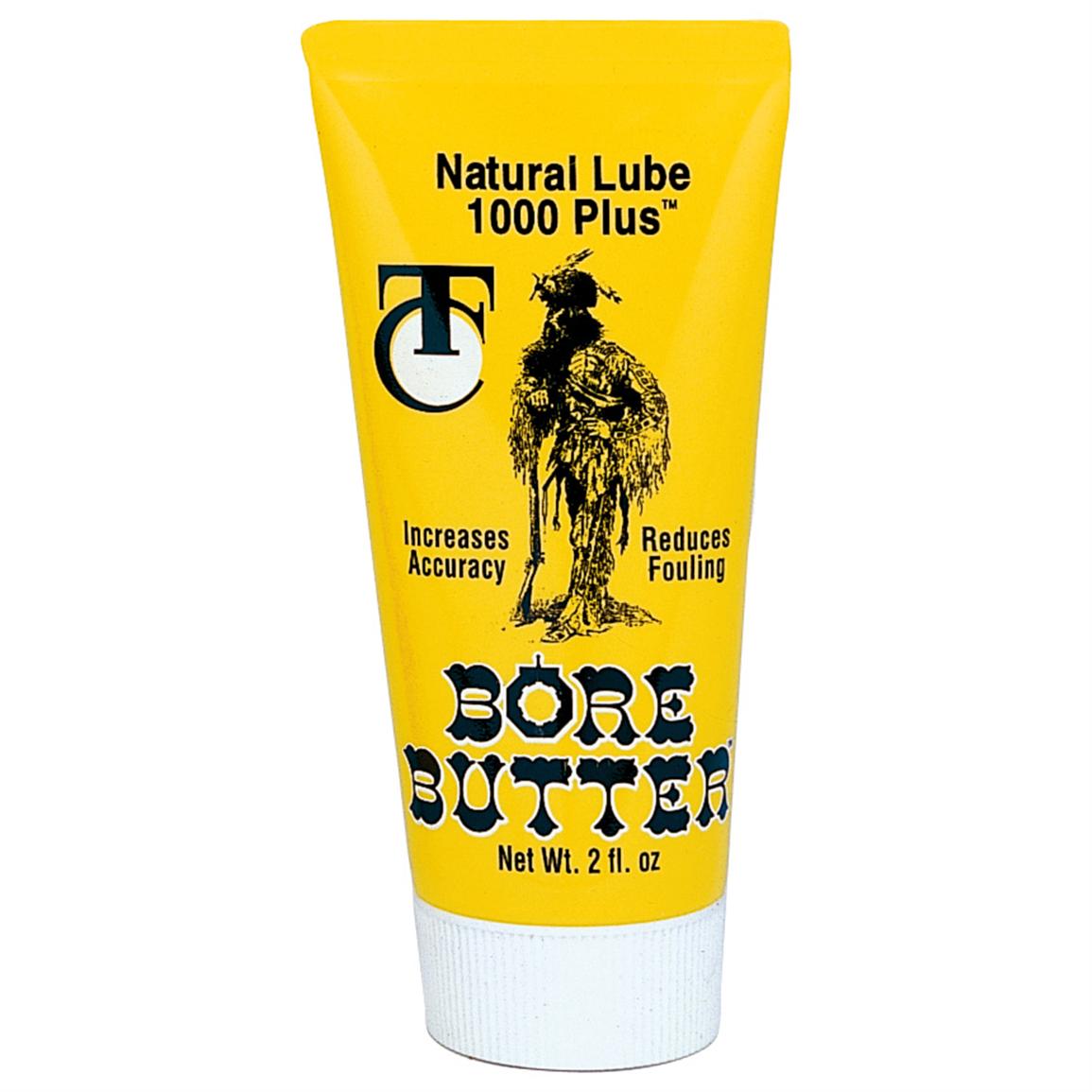Recommended Twist: 1:28 - 1:32 - 1:38 & 1:48

Upon impact, the Hornady FPB's flexible elastomer tip compresses into the nose of the bullet causing violent expansion at impact velocities from 800 to 2000 fps, creating extraordinary transfer of energy for quick, efficient kills and minimal tracking, if any. The Hornady® FPB™ 300 grain bullets are easy to load, deliver surgical-like accuracy and consistent, devastating performance. Why would you shoot anything else? The Hornady® FPB Muzzleloader Bullets come in a package of 15.
Now this is a projectile I never really spent a whole lot of time on, and the #1 reason behind that is... They are a friggin SOB to load! The FPB is a hard lead alloy with a thin copper wash coating on them to prevent lead fouling in the bore. If you're not shooting Blackhorn209, you better swab between shots, otherwise, you'll end up with one of these bullets stuck a few inches down the bore. I know Hornady advertises that they are easy to load, but when you break out in a sweat and your palm is sore after reloading a couple shots... It is simply unreal. Your mileage may vary!
Pros - Cons?
Pros: Shoot them with what ever powder charge you can safely shoot in your gun without fear of them exploding on impact.
Cons? Super hard loading in all of my muzzleloaders.
A strong, sturdy short starter is highly recommended with these bullets in order to get them started into the muzzle. DO NOT FORGET IT AT CAMP WHILE HUNTING!
Hornady Great Plains Bullets
Recommended Twist: 1:28 - 1:32 - 1:38 & 1:48
If you want something cheap, easy to find and extremely accuracy, the Hornady Great Plains Bullet is a fantastic Do - All Big Game Projectile. Available in pure lead, 385 grains and a small hollow point, these bullets has shot amazing out of almost every rifle I have tried them in. Rifling twist of 1:28 to 1:48 have always grouped 2" or less at 100 yards with open sights. My best shooting load was with a Winchester X-150, 80gr Pyrodex RS and a 3 shot group that measured 5/8" center to center. Deer, Elk, Antelope, Bear... they don't stand a chance.
Now, because this bullet is soft pure lead, we do have a powder charge limit in order to control over expansion. I'd set a 90gr 2fg charge limit for this bullet from my experience in the field with this projectile.
$9.99 at Big R & Sportsmans Warehouse.
Some tighter bored muzzleloaders may need a short starter to pop them in the muzzle.
Next....Cream of the crop for Muzzleloading Bullets?
Thor Bullets:
Recommended Twist: 1:28 - 1:32 - 1:38 & 1:48
Easily one the best big game performing bullets you can buy today!
In 2008, I came across a link for a new muzzleloading bullet that was 100% Copper and opened up to just under 1" diameter when it was all said and done. I inquired about getting a small sample to test out and eventually, we took the 250gr Colorado Thor ( as it was called at the time ) to New Mexico for a mule deer hunt. We were using a CVA Accura .50cal with a 1:28 twist and 105gr Pyrodex RS. The first day of the hunt, my brother in law was the shooter and got excited at finding a small 3x3, he hit him with the range finder and received a 175 yard ranging. At the sound of the shot, the buck dropped! The aiming point was at his chin and the bullet dropped into his chest ( center facing ) and lodged into the spine, between the shoulder blades!
Actual recovered bullet from this hunt:
















































